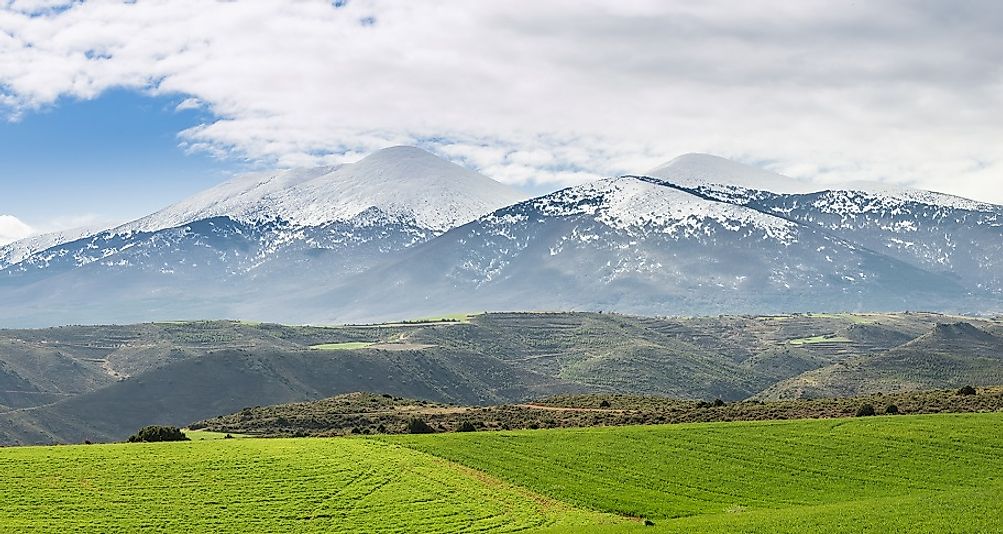Trasmoz, Spain - Cursed Village Of Aragon

5. Location
A village with a bizarre story of witchcraft is nestled amidst the foothills of the Moncayo mountain range in the Zaragoza province in Aragon, Spain. The village is currently inhabited by only about 65 inhabitants and has many strange and often blood-curdling stories associated with it. Many of the streets of the village are said to be named after witches who inhabited the village at some point of time like Casca, Dorotea, and Galga.
4. History
There is a long and interesting history behind the present reputation of the village of Trasmoz. It is said that in the 13th Century, the residents of the castle in Trasmoz used to forge fake coins in the dark of the night and as an explanation for the rattling and clanking noises produced, they spread a rumor that wicked witches dwelling in the mansion were responsible for these strange noises. Since then, the village became associated with witchcraft. Since the territory around Trasmoz was not affiliated with the Catholic Church and the residents did not pay taxes to the Church, the Church officials were never too happy with the people of the village. When the rumors of witchcraft in the village spread further, the Archbishop of Tarazona took the opportunity to excommunicate the entire community of Trasmoz from the Church and the rest of the society, with repentance being the only way to overcome this condition.
However, since the village was inhabited by a community of wealthy Christians, Jews and Arabs who earned heavy cash from the large numbers of iron and silver mines in the area, they still did not care much about the excommunication though they did protest against the diversion of water from their village under the order of the monastery. It is alleged that the wealthy Lord of Trasmoz even sent his own forces to inflict physical assaults on the monastery abbots and monks. When the abbot complained against this violent behavior of the Lord of Trasmoz to King Ferdinand II, little action was taken and the affair was probably hushed up by huge transactions of cash between the influential people of the village and the royals. The Church feeling humiliated by the defeat thought of taking a new course of action and under the orders of Pope Julius II, a curse was cast upon the village in 1511 by the Church and only a Pope had the right and powers to remove the curse which, as of yet, has never happened. Only a decade later, the castle at Trasmoz was burnt down by a fire and the Jews inhabiting the village were forced to flee when Spain expelled the Jews. The population of the village thus rapidly started deteriorating and from a thriving 10,000, it is now limited to only 65 people.
3. Tourism
For long, people have been attracted to places with strange and creepy stories and the village of Trasmoz is no exception. Thus, many visit the village today in search of clues to the past, to talk to the living self-proclaimed “witches” of the village, explore the mysteries of the village, visit the tiny witchcraft museum, and also capture photographs of the ruins of the Castillo de Trasmoz, the center of all controversies.
2. Association with Witchcraft
The belief in witchcraft in the village of Trasmoz was so strong at a time in history that women inhabiting the village were actually convicted of being witches and killed. For example, one can find a wrought iron statue of a woman named La Tia Casca. After a lethal epidemic struck the village in the 19th Century whose cause went undetected, the people started suspecting La Tia Casca who was though to have a secretive nature. She was then thrown down into a deep well as punishment for being a witch in 1860. Though that is the last known news of “witch hunt” in the village, the tradition of witchcraft has been preserved here in the form of the Feria de Brujeria festival in June when the village hosts a market where strange herbs and lotions with hallucinogenic potentials, obtained from the nearby mountain, is sold. There are also plays where actors enact the past stories of witch hunting and killing. One lucky woman also wins the prestigious title of “Witch of the Year” during a contest held at this festival.
1. Surrounding Habitats
The village of Trasmoz is situated at the base and slopes of a small hill with the ruins of the Castillo de Trasmoz at the peak of this hill. The backdrop of the village is formed by the snow-capped peaks of Mount Moncayo. The village experiences a warm, temperate climate with an average annual temperature of 11.8° Celsius. The area also receives a high volume of rainfall with the average rainfall being 487 millimeters.







